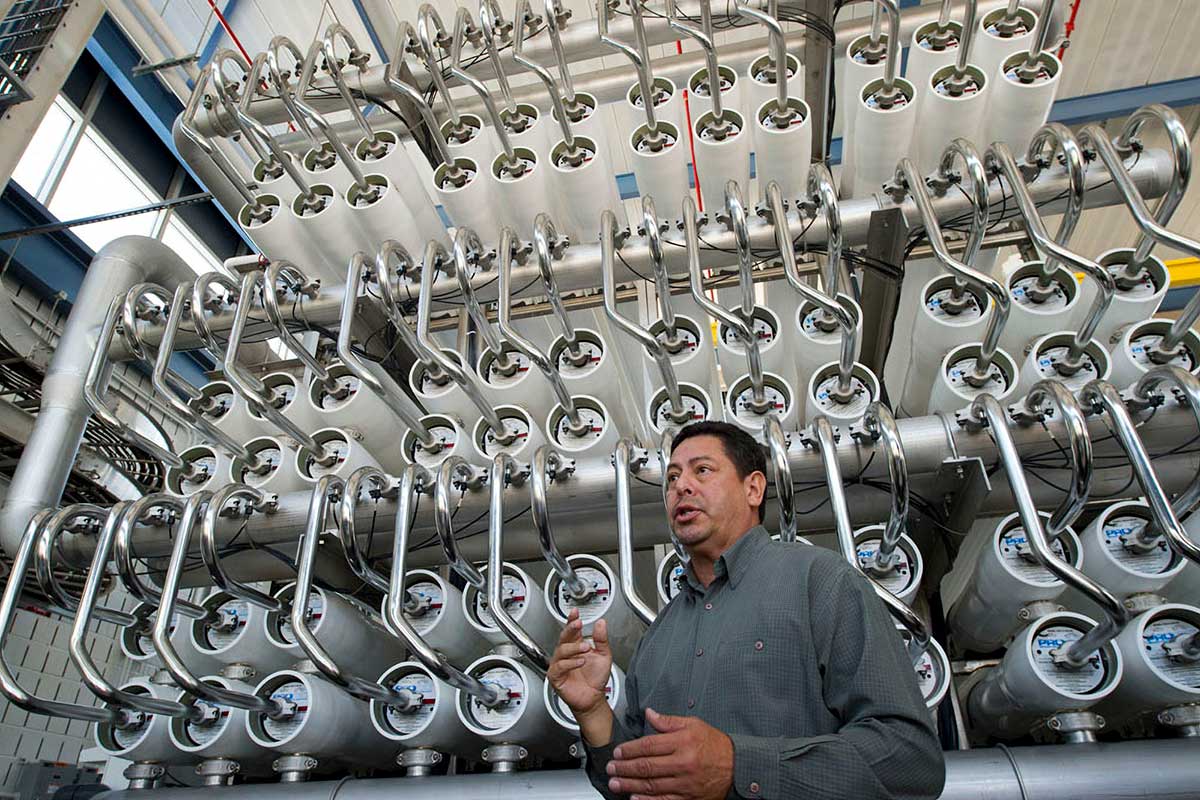Beneath Texas’ surface lies an ocean of water: an estimated 2.7 billion acre-feet of brackish groundwater in aquifer systems. And while there’s a lack of detailed information about that water—how much is actually usable and reachable, and what are the costs of making it drinkable?—desalination projects continue to spring up around the state.
Desalination, the process of removing salt from brackish water or seawater, now represents less than 1 percent of Texas’ water supply. But the Texas Water Development Board’s 2012 state water plan calls for the state to derive 3.4 percent of its water supply from desalination plants by 2060: 2 percent from brackish groundwater and the remainder from the sea.
As the proposed water plan makes clear: Our population is booming, and water resources are shrinking. We’ve got to find water somewhere, and desalination, despite its unknowns, more and more looks like a viable option.
“It is going to be important to us,” says Dan Hardin, director of the TWDB’s water resources planning division.
Currently, there are 44 desalination plants in Texas, four of which are idle. Around 2000, the state saw a dramatic increase in capacity and the number of facilities, says Jorge Arroyo, director of Innovative Water Technologies for the TWDB.
The star of the bunch, the 5-year-old Kay Bailey Hutchison Desalination Plant in El Paso, is the largest inland facility of its kind in the world with the capacity to produce 27.5 million gallons of freshwater a day. The plant reduces pressure on El Paso’s main aquifer, the Hueco Bolson, all while seldom operating at full capacity: In mid-April, for example, before the onslaught of summer heat, it was supplying about 7 percent of El Paso’s daily freshwater supply—a significant boost on the dry Chihuahuan Desert landscape and a nod to the city’s diverse water strategies that place top priority on conservation and diversification.
Based on recommended water management strategies in the state water plan, which the Legislature will deliberate in 2013, desalination water supplies are projected to increase by 310,000 acre-feet—more than 101 billion gallons—per year by 2060. More than half of that increase is expected to come from brackish groundwater sources.
In the state water plan, five regional water planning groups—a 15-county Galveston area, Llano Estacado, Rio Grande, South-Central Texas and far West Texas—have recommended brackish groundwater desalination to help meet water needs over the next half century. Chief among those proposals is the San Antonio Water System’s desalination facility in southern Bexar County. The plant, scheduled to go online in 2016, will reduce dependency on the city’s primary water source—the Edwards Aquifer—with the ability to produce 10 million gallons of freshwater a day from brackish water in the Wilcox Aquifer.
And then there’s the real ocean—the 367-mile coastline along the Gulf of Mexico, giving Texas access to an unlimited supply of seawater. The state water plan details seawater desalination proposals from five regional water-planning groups with direct access to the gulf.
Foremost on that list is a project on South Padre Island. In 2011, voters in the Laguna Madre Water District authorized the issuance of bonds to build a $13 million seawater desalination plant with the capacity to produce 1 million gallons of freshwater a day. Construction is scheduled to start in 2013.
So there’s water in Texas: It’s just a matter of determining, on a case-by-case basis, of how much brackish water and seawater can be blended into daily freshwater drinking supplies, Arroyo says.
Embarking on desalination projects requires a characterization of resources, he says—time, money, expertise—and specifics: Where do you drill wells, and how deep? What is the quality of the water, and how will it change once construction starts? These are complex, expensive questions with no immediate answers.
But there’s no looking back: The demands on the state’s water supplies are forcing innovative change that a few decades ago would’ve seemed like something out of a science fiction novel. No, we can’t make it rain. But in Texas, we can make water.
“Water is a blessing making life possible,” Arroyo says. “In that regard, if salty water can be thought of as a blessing, Texas is abundantly blessed. The blessings come in the form of ample supplies of untapped salty water that can be converted to fresh water by modern desalination technologies.”

